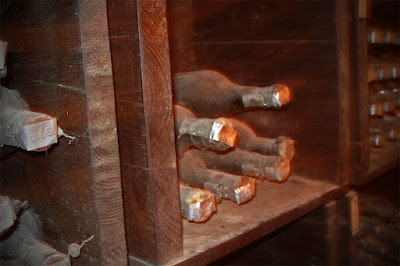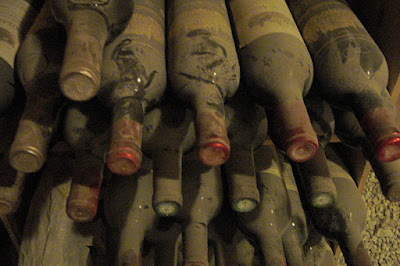“Sometimes the older ones, the ones that have been in there a long time, they get forgotten. They become invisible."
It had been a month of Sundays since I last updated my cellar list. Over the years I managed to work up a spread sheet. It was far from perfect, but at least it provided me a list with what I had collected over the course of a life and a career in the wine trade. Sometimes it was in multiples – of three, of six, even twelve. And often it was a lone solitary bottle, stashed away for that perfect dinner, or celebration.
And sometimes, a bottle would get away from me. Maybe we only had eleven and drank all of them. Maybe we actually drank the twelfth and I forgot to mark it off the spreadsheet. It happened from time to time. But when I’d do a full inventory, those stragglers usually showed up and were put back on the list.
This wine was different. It was, well, let’s just say, one of a kind. It was old and dark and from an odd vineyard. Not terribly fashionable with the snotty somm set that beat their drums loudly over every pét-nat and grower’s champers, or an ancient Barolo from Mascarello or Conterno, Aldo or Roberto.
No, this was a wine that had gone out of style around the turn of the 21st century. You could imagine where it came from.
But first, it had to reveal itself to me.
I was digging through a pile of Clarets when I spotted a bottle that looked out of place. It was buried under three or four layers of bottles, so it would take a few minutes to unearth it. And it was in the far corner of the cellar, which was a tight fit, and it was dark.
Dark and gloomy, a place where old wines went to age and possibly die before their time. Wines from the ‘70’s and ‘80’s. Some of them just would be best served as insulation (and cover) for the invisible wine that was finally revealing itself again to me.
After about five minutes I was able to get ahold of the wine. I nearly gasped, for it wasn’t what I thought it was. Yes, it was old. And yes, it was red. And yes, it was from a forgotten region. But in no way was this wine ever a forgotten wine. Only invisible.
I liken it to an old friend that one has lost touch with. They aren’t dead, but one isn’t in contact with them to know their story in, let’s say, the past 25 years or more. That was what this wine was. An old friend that I hadn’t seen or heard from in a generation.
And in a generation a lot can change in the world.
I wonder about the farmers who grew these grapes. most of them are long gone, dead. Or the winemaker, who surely has passed as well. And the importer. That importer doesn’t exist anymore. Nor does the distributor who sold it to the retailer. The retailer is also out of business now, they’ve closed their doors.
And still, this bottle of wine is a witness to all that went before and here it is now standing before me, telling me, “I made it to this point. Isn’t that cause for a celebration?”
Indeed, it is. And indeed, we will. All of the invisible bottles and dead laborers will gather, in spirit if not in the flesh, and decant this last remnant of an age. And send it off with a proper Norsemen funeral.
“It is fortunate
to be favored
with praise and popularity.
It is dire luck
to be dependent
on the feelings of your fellow man.”
— The Hávamál






No comments:
Post a Comment